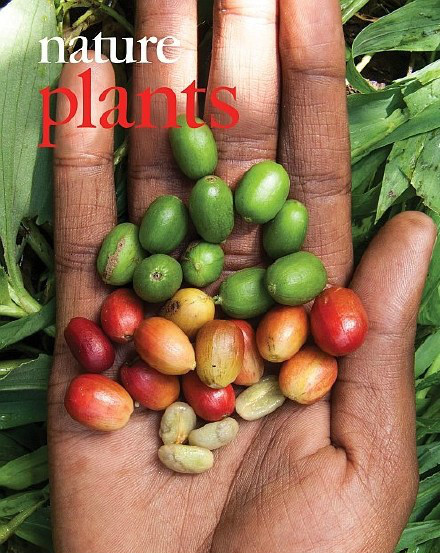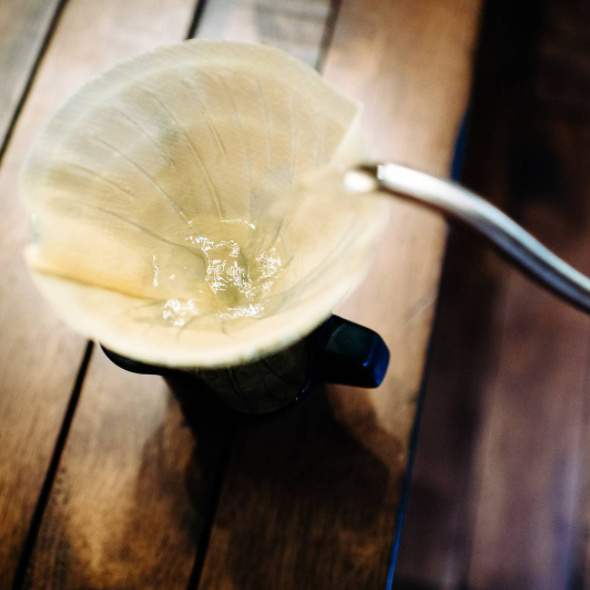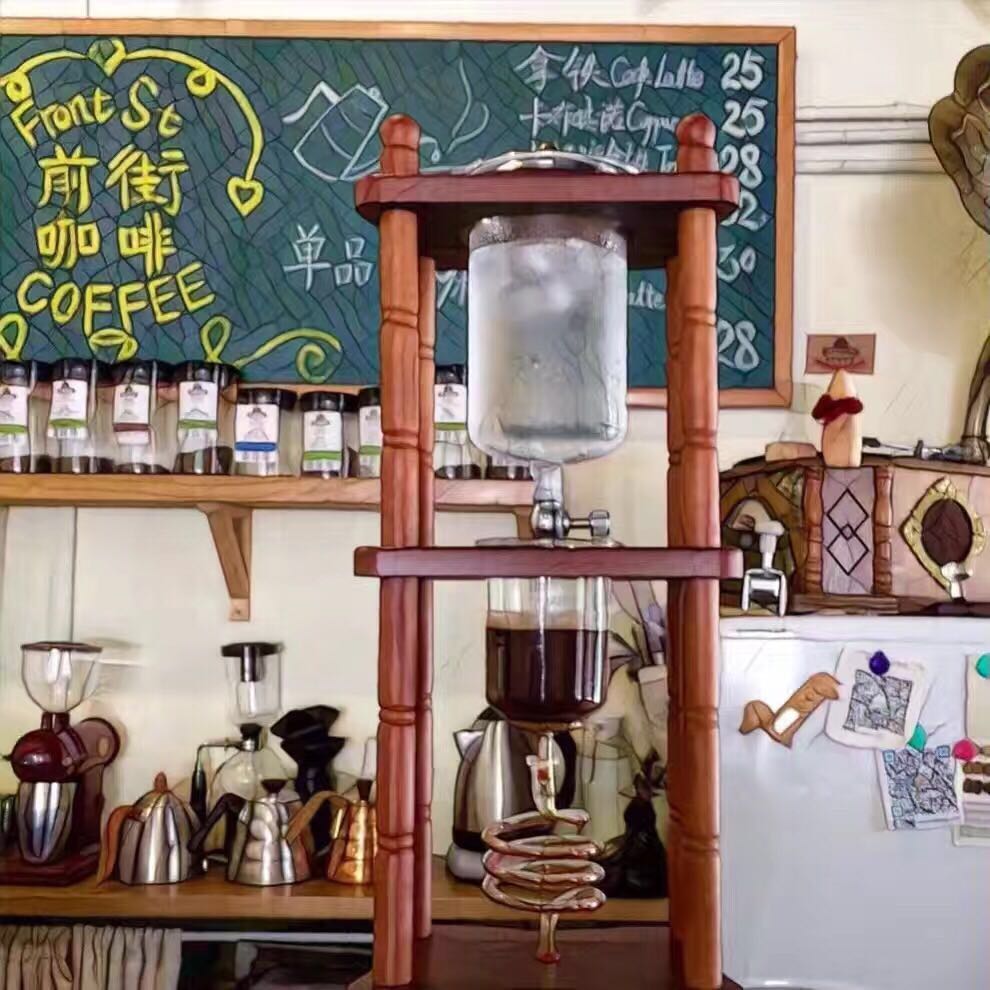The difference between wet treatment and wet planing, Sumatra's unique Wet-Hulling treatment.
Sumatran coffee
In July 2016, Ken Davids and I did a cup test of 27 Sumatran coffees, which opened up a whole new world of coffee flavor for me.
I have been testing coffee cups for less than a year. Because of my background in food and wine writing, it should not be difficult to enter the coffee world. Of course, I need to receive professional training in coffee cup testing to learn to conduct a rigorous sensory evaluation of coffee.
Although I have long enjoyed making coffee at home, I have never focused on coffee most of the time. I soon realized that coffee is at least as complex as wine, and that coffee may be more subtle from a sociocultural point of view.
Effect of treatment methods on Flavor perception
When I did a cup test with Kenneth davids and Jason Sarley for the first time, I had no sense of coffee flavor at all.
"Yes, I felt dark chocolate, orange peel and an aroma similar to cedar wood when I was testing Sumatran coffee, but where are the flowers discussed by other cup testers?" Why do they call this caffeic acid "light" instead of "bright"?
In terms of wine, I often pay attention to grape varieties, because varieties are often the best reference factor for predicting wine flavor, followed by their unique origin information. But when it comes to tasting coffee, I find that the treatment is the first step in unveiling the mystery of coffee flavor. Of course, it is also important to understand the impact of coffee varieties, but it seems to me to start with understanding the impact of treatment on coffee.
During the months of studying cup testing, I had the privilege of experiencing boutique coffee that I had never come into contact with: such as Sudan Rume, Panamanian summer, and many sun-treated Ethiopian coffee. The flavor of these coffees is very new to me. I've never associated blueberry, rye whisky with coffee flavor before.
On the contrary, I am familiar with the flavor of washed Colombian and Costa Rican coffee. I can feel the type of sweetness and the type of fruit, aroma and intensity that these sweetness can be associated with. These coffees always have nutty and chocolate flavors.
Unique Wet-Hulling treatment in Sumatra
Most of the fine Sumatran coffee tested in this cup are treated with a special wet treatment, which is called "wet planing / wet hulling".
Traditional wet treatment (wet/washed) includes the removal of coffee peel, the removal of coffee pulp and pectin by fermentation or washing or mechanical means. No matter how the coffee beans are always in the parchment / shell and then dried to a moisture content of 12.5%, the dry and fragile parchment / shell is separated from the coffee bean only when it is ready for shipment.
However, in the wet planing treatment, the parchment / shell is removed during the drying stage, when the coffee beans still have a high moisture content, usually as high as 40%. This small difference results in a significant difference in the flavor of coffee between the traditional wet treatment and the wet planing (wet-hulling).
Poor quality wet planing coffee has moldy and rotten flavor, while good quality wet planing coffee has the flavor of sweet tobacco and tropical water.
Introduction of Indonesian Wet planing (wet-hulling) treatment
Processing and flavor of S795 coffee in Sulawesi, Indonesia
Earth Elf: Sumatran Wet Planer Coffee
I have tasted several Sumatran coffees before, none of which impressed me deeply. For the first time in this cup test, I sensed the positive flavor of Sumatran coffee, including wet cut tobacco / tobacco, dried pineapple, and spicy smoke (regardless of the degree of roasting, from the coffee bean itself).
From my wine experience, Sumatran coffee is reminiscent of Cabernet Franc (Cabernet Sauvignon grape), and Cabernet Franc is usually perceived as crude, mellow, herbaceous, dirt, and even vegetables.
The most common flavor description of boutique Sumatran coffee in this cup test is tobacco, various tropical fruits such as mango and coconut, tamarind sour beans, and perhaps the biggest surprise to me is the scent of lilac and honeysuckle in the coffee. Occasionally, there is a feeling of "damp leaves with a certain degree of decay" in coffee, and the sweetness of fine Sumatran coffee is very obvious.
Part two
Commercial wet planing coffee
Why do Indonesian coffee farmers use wet planing? There are historical and geographical reasons:
In 1699, Dutch colonists introduced coffee to Indonesia for the first time in order to gain economic benefits. From their profit-oriented point of view, coffee is piled on the farm waiting to be processed, which is a complete waste of money and time. Because wet planing takes less drying time, they can see returns faster and reduce labor.
Second, people may adopt the wet planing method even if it is not considered from the point of view of economic interests. Because in the high humidity environment of this country, drying coffee beans can be a problem. If the weather is good in other producing areas, it usually takes 2-3 weeks to dry the coffee. In most parts of Indonesia, rainfall and humidity are high, and it takes much longer to dry coffee beans. Before the coffee beans reach the standard water content, bacteria will multiply and cause defects in the coffee.
Average rainfall in Bandar region, Indonesia
Average rainfall in Sidamo region of Ethiopia
During the drying stage, coffee is always in the shell / sheepskin of coffee. Fruit shell / parchment it protects coffee from damage by external factors and helps beans to be consistent during drying.
However, in the wet planing treatment, the parchment is removed during the drying stage, so that sunlight and heat can directly penetrate the coffee beans, thus increasing the drying efficiency by 2-3 times.
Commercial wet planing coffee flavor
The wet planing method is famous for its rich alcohol thickness and low sweetness and acidity. There may be slight tobacco characteristics, but when we mention commercial wet-planed coffee, the general impression is that it is of medium quality and inconsistent flavor. The reasons are:
The traditional wet planing method is characterized by speed and roughness, resulting in too many coffee bean defects. Local advanced processing equipment is so scarce that coffee farmers often put coffee beans on concrete patios or even on roads to dry.
Defects of coffee beans caused by traditional wet planing treatment
Most Indonesian coffee is used for blending. Recently, more and more farms, especially in Sulawesi and Sumatra, have begun to use traditional wet planing to produce boutique coffee beans.
What does wet planing mean to bakers?
The biggest question for roasters is why use this unbalanced and flawed commercial wet-planed coffee?
The answer is: alcohol thickness. Adding a small amount of wet planing coffee to the blended coffee will also help to increase the alcohol thickness of the blended coffee. Just 10% of the mixture can have a big impact on the taste. Be careful, though: too much wet-shaved coffee can cause a muddy, even dirty taste.
In addition, the roasting of wet planing coffee is also difficult. One of the most important parts of roasted coffee is to dehydrate the beans to make sure they reach an explosion at the right time. The water content of wet-planed coffee is about 10.7% Mel 11%. This is 1% more moisture than other coffee methods, so you need to use more firepower at the beginning of baking. If the coffee is not dehydrated enough, you will end up with an inconsistent, astringent, unbalanced and sour coffee.

Important Notice :
前街咖啡 FrontStreet Coffee has moved to new addredd:
FrontStreet Coffee Address: 315,Donghua East Road,GuangZhou
Tel:020 38364473
- Prev

Filter paper comparison: bleached vs unbleached, how to remove the smell of the paper?
Coffee filter paper is essential for tasting delicious coffee. Should you buy bleached or unbleached ones? What can you do to avoid the paper taste of your coffee? Is there anything else you should pay attention to? Please read carefully to find out the answer. The origin of paper filter has been in cloth filter (socks) for a long time, and coffee filter paper has been around until the beginning of the 20th century.
- Next

Iced coffee, cold coffee, iced coffee, iced coffee
Iced coffee: this is an appliance, invented in the netherlands, so this appliance is also known as the dutch iced coffee pot. Coffee is very popular now. The method of use is to store ice cubes in a water bottle, put medium ground coffee powder in a ratio of 1:10 in a coffee powder cup, adjust the flow rate to 7 drops per 10 seconds through a water drop adjustment valve, and wait for 8-12 hours slowly.
Related
- Beginners will see the "Coffee pull flower" guide!
- What is the difference between ice blog purified milk and ordinary milk coffee?
- Why is the Philippines the largest producer of crops in Liberia?
- For coffee extraction, should the fine powder be retained?
- How does extracted espresso fill pressed powder? How much strength does it take to press the powder?
- How to make jasmine cold extract coffee? Is the jasmine + latte good?
- Will this little toy really make the coffee taste better? How does Lily Drip affect coffee extraction?
- Will the action of slapping the filter cup also affect coffee extraction?
- What's the difference between powder-to-water ratio and powder-to-liquid ratio?
- What is the Ethiopian local species? What does it have to do with Heirloom native species?

